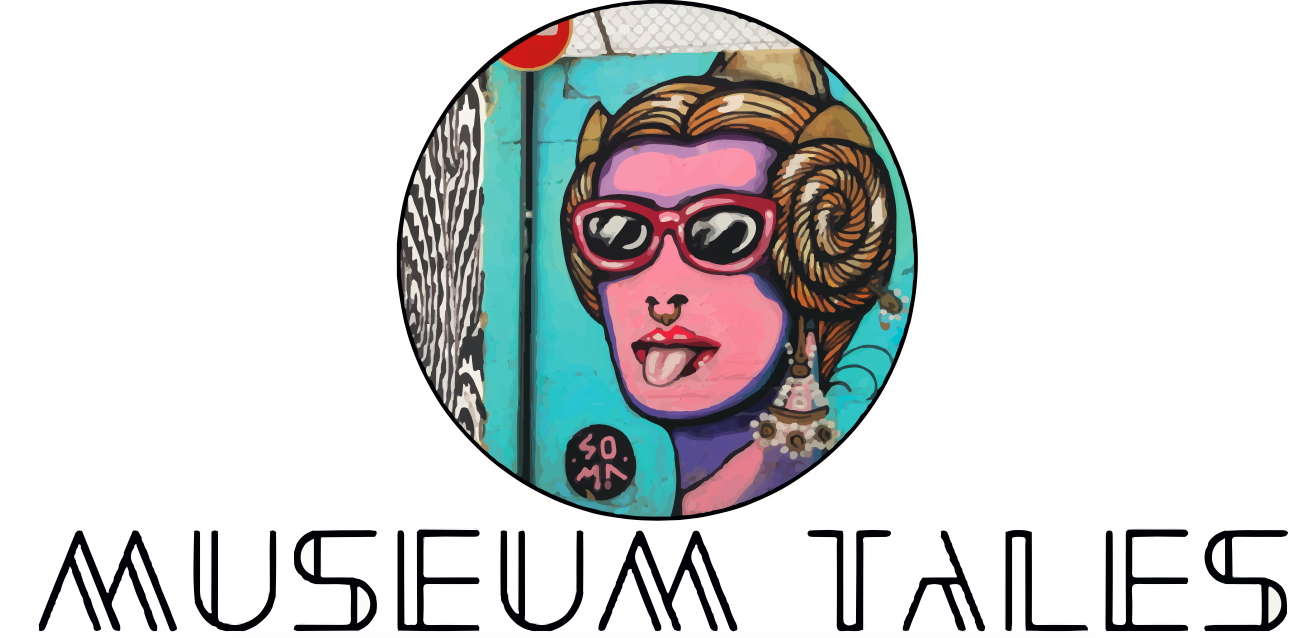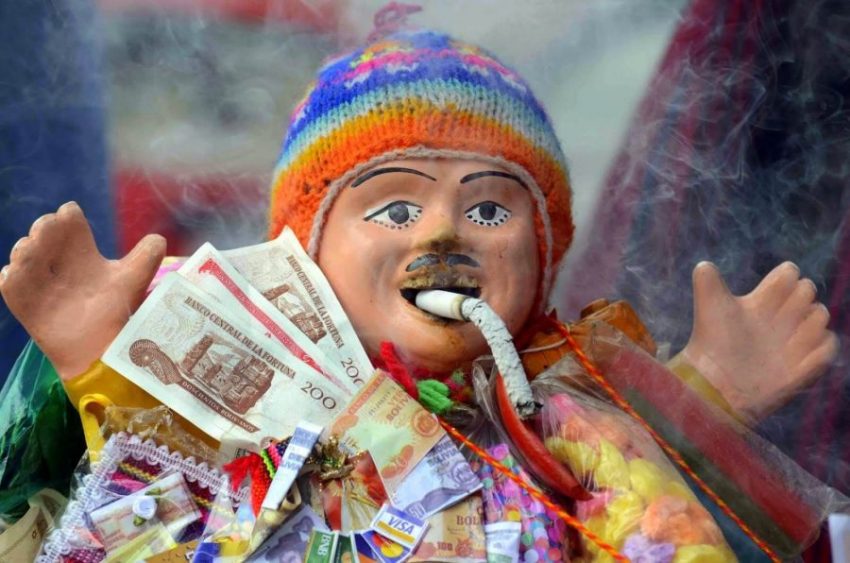A pre-Inca amulet that brings good fortune if you care to light him a cigarette and serve him a shot of liquor!
An ekewhat? The name of the man in question comes from Quechua Iqaqu (pronounce: ekjakja). It is typical of the cultures and beliefs of the Altiplano (area of South America where the Incas developed their culture). It is thus found in Bolivia and Peru, but also in the North of Argentina and Chile since the cultural area is similar.
What does it look like? It is a male statuette, dressed in the Indian fashions of the Altiplano (thus varying according to the regions, the most common being the one presented in the photo below). Variants also present him dressed as a merchant or a city dweller « with responsibilities » (lawyer, notary …), or rather somebody who brews a lot of money!

Functioning like a lucky charm, well pampered, it will bring abundance and prosperity to its owner and to the store in which it is placed. That is why this deity of good fortune is represented on lottery tickets.
In some extent, this is the Bolivian version of the Chinese lucky cat holding his paw.
Sold « naked », its owner hastens to garnish it with an object concretely symbolizing the wishes of prosperity and abundance that he wishes to see granted (cigarettes, household appliances, real money bills, peanuts, corn, bags of flour, musical instruments…). And all this in miniature, because the gentleman is no more than 20 centimeters high (while the tallest of them, during parties, can measure up to 1.30m!). These miniatures are acquired during the “Alasitas” fairs.
There is therefore, as in some Asian cultures, a trade in miniature replicas of consumer goods and everyday objects, in order to give substance to beliefs.
Nb. If it is love that you seek, you need to get him a miniature rooster or hen!
Another key characteristic: you have to smile! Modern ekekos smile to the fullest, open their arms wide and welcome you with a well rounded paunch. Their attitude, in addition to serving the practical goal of being able to deposit as many objects as possible (you shouldn’t hesitate to put weight on their shoulders!), calls for joy and satisfaction. In short, it is the good friendly buddy who brings you the aperitif when visiting you!
Nevertheless be careful, this friend only drinks and eats, smokes and plays music on Tuesday and Friday! These days, considered evil in the Andes, are the only days during which the ekekos can be put in charge of new desires!
Finally, his wide smile invites you to slip a cigarette, a joint of marijuana or a cigar!
But what about its history? Some studies link him to the Aymara deity Tunupa (very close cousins of the Quechuas with whom they share the Bolivian and Peruvian Altiplano, descendants of the Incas). Anyway, it revolves around the Inca and Tiwanaku cultures (former independent cultural population living on the Bolivian Altiplano, near La Paz).
The oldest figures still standing today date back to 1780, around La Paz. However the belief in this divinity would go back to much earlier than that, to the Pukaras and Tiwanaku cultures, that is to say some 200 years BC. Then, the Incas would have adopted it and would have related it more broadly to prosperity.
Under the yoke of the Catholic Church who would have liked to see this dreadful pagan disappear, he was dressed (yes, he was originally naked and endowed with a prominent penis, a sign of fertility) and his features were mixed with European aspects.
We should also note that some of the prayers which must be made to him end with an « Amen ». Sacred syncretism!

As a bonus, Museum Tales gives you the manual:
If his whims tire you and you want to dump him, you will have to explain it to him, politely and around a shot of liquor!
According to certain beliefs, if the home he is responsible for protecting consists of a young single woman, the ekeko could fall in love with her and bring bad luck to all his suitors. But no worries: just give him a cigarette or a joint to him every Friday and he’ll be quiet.
If good care is forgotten, the ekeko becomes pernicious and causes bad luck. Finally, if its whims tire you and you want to get rid of it, you must explain it to him around a shot of liquor and politely indicate to him where it will be deposited next (church, other house, other shops, museums, collectors…).
What else does the story of this smiling man tell?
- He is, like Mary the Virgin who becomes the Mother-Earth goddess Pachamama, an excellent example of the religious syncretism between the Christianity of the settlers and the South American Indian beliefs.
- It is reminiscent of statuettes made for a similar purpose of fertility and abundance in sub-Saharan Africa (the Dogon of Mali, their ancestors the Tellem, or the Senufo statuettes …): the peoples increasingly united throughout the time and space by their deep humanity, unique at all times.
- In the same vein, the voodoo fetishes of Dahomey, found in the Beninese capital, are also die-hard smokers who will only be able to begin their daily mission of protecting the home once the cigarette is in their mouth!
- Another interesting conclusion: it shows how Bolivia and Peru are countries forming one unique area as for the same large cultural area they share (divided into several sub-groups and distinct societies), but which the colonists then divided among themselves without much care…
Sources :
- MUSEF (museo antropologia y folklore) , Sucre, Bolivia.
- DÍAZ VILLAMIL Antonio, Leyendas de mi tierra, 1989.
- PORTELA Juan B., Compendio de las tradiciones pampeanas, 1909.
- POSNASKY Arthur, «El ekeko y la fiesta de Alasitas». In Revista de Antropología de Bolivia, 1942.
- http://www.portaldesalta.gov.ar/ekeko.html
- https://mitosyrelatos.com/america/mitologia-sudamericana/ekeko-o-equeco
- https://es.wikipedia.org/wiki/Ekeko
- https://hablemosdemitologias.com/c-mitologia-inca/ekekos/

